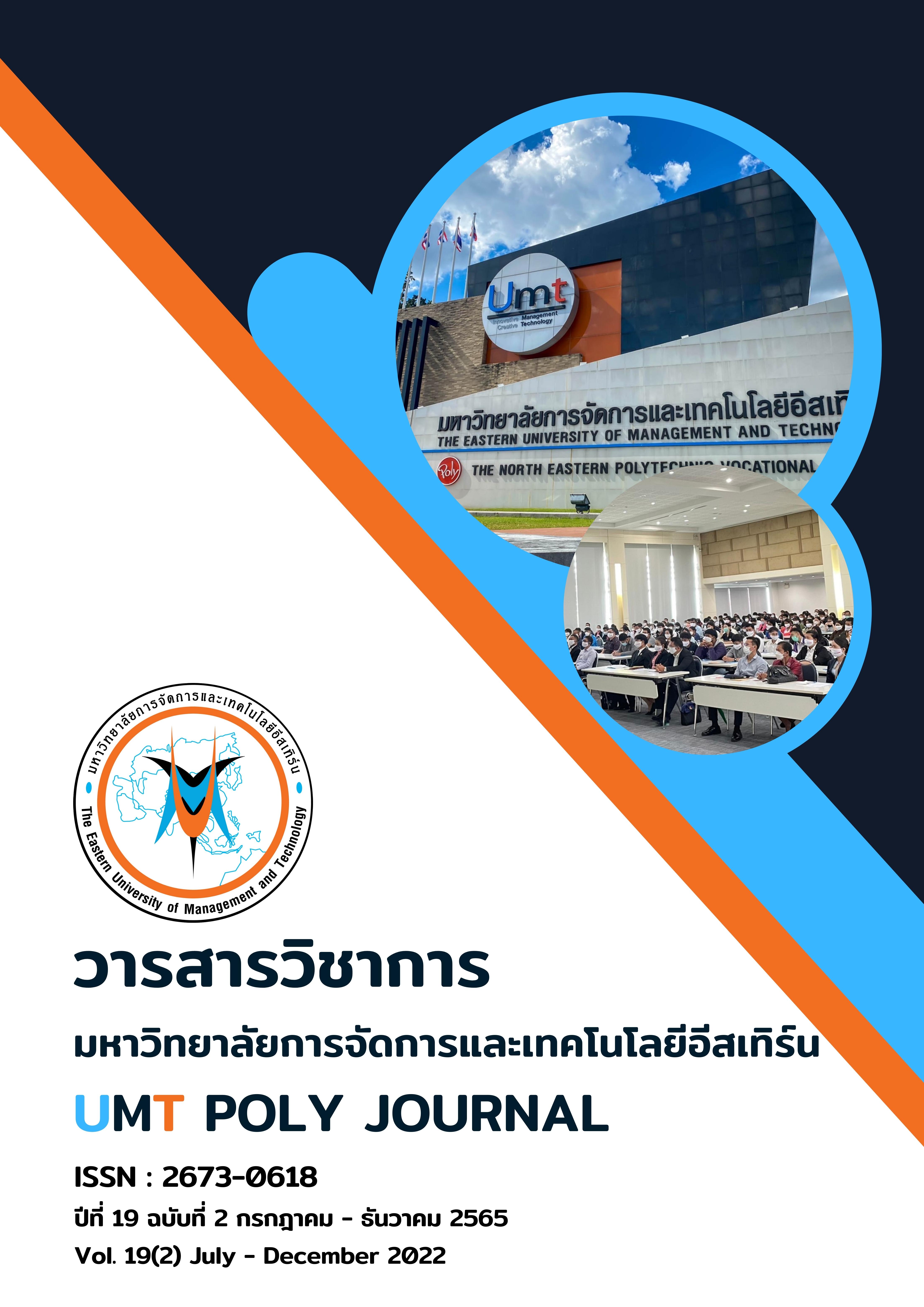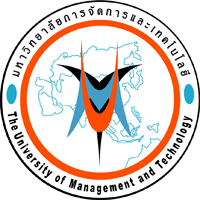ธัญญลักษณ์ ตั้งวารี แนวทางการบริหารจัดการขยะอิเล็กทรอนิกส์ภาคครัวเรือน
คำสำคัญ:
การบริหารจัดการ, ขยะอิเล็กทรอนิกส์ภาคครัวเรือน, เมืองพัทยาบทคัดย่อ
การวิจัยนี้มีวัตถุประสงค์เพื่อ 1) ศึกษาสถานการณ์ขยะอิเล็กทรอนิกส์ภาคครัวเรือนในพื้นที่เมืองพัทยาและปัจจัยสำเร็จในการบริหารจัดการขยะอิเล็กทรอนิกส์ภาคครัวเรือนในพื้นที่เมืองพัทยา 2) ศึกษาวิธีการบริหารจัดการขยะอิเล็กทรอนิกส์ภาคครัวเรือนขององค์กรปกครองส่วนท้องถิ่นและผู้ประกอบธุรกิจคัดแยกขยะอิเล็กทรอนิกส์รายย่อยในพื้นที่เมืองพัทยา 3) ศึกษาการมีส่วนร่วมในการบริหารจัดการขยะอิเล็กทรอนิกส์ภาคครัวเรือนของประชาชนในพื้นที่เมืองพัทยา และ 4) เสนอแนะแนวทางการบริหารจัดการขยะอิเล็กทรอนิกส์ภาคครัวเรือนขององค์กรปกครอง
ส่วนท้องถิ่นและผู้ประกอบธุรกิจคัดแยกขยะอิเล็กทรอนิกส์รายย่อยในพื้นที่เมืองพัทยาอย่างมี ประสิทธิภาพ ทำการเก็บรวบรวมข้อมูลโดยการสัมภาษณ์แบบมีโครงสร้างผู้ให้ข้อมูลสำคัญ 3 กลุ่ม ประกอบด้วย 1) ผู้บริหารองค์กรปกครองส่วนท้องถิ่น จำนวน 1 ราย 2) ผู้ประกอบธุรกิจคัดแยกขยะอิเล็กทรอนิกส์รายย่อยในพื้นที่เมืองพัทยาที่เป็นกิจการขนาดกลางและขนาดย่อม จำนวน 5 ราย และ 3) ผู้นำชุมชนในพื้นที่เมืองพัทยา จำนวน 5 ราย จากนั้นทำการวิเคราะห์ข้อมูลโดยการวิเคราะห์เนื้อหา ผลการวิจัยพบว่า 1) พื้นที่เมืองพัทยาประสบปัญหาขยะอิเล็กทรอนิกส์จำนวนมากจากอัตราการใช้เครื่องใช้ไฟฟ้าและอุปกรณ์อิเล็กทรอนิกส์ที่เพิ่มขึ้นอย่างรวดเร็ว ซากผลิตภัณฑ์เหล่านี้ยังไม่มีการจัดการอย่างถูกต้องตามหลักวิชาการ ขาดระบบการบริหารจัดการที่ครบวงจร ประกอบกับโรงงานรีไซเคิลขยะอิเล็กทรอนิกส์ที่ได้มาตรฐานมีจำนวนไม่เพียงพอ 2) ปัจจัยสำเร็จในการบริหารจัดการขยะอิเล็กทรอนิกส์ภาคครัวเรือนในพื้นที่เมืองพัทยา ประกอบด้วย การมีส่วนร่วมของทุกภาคส่วน การปฏิบัติตามหลักเกณฑ์การจัดการ การปลูกจิตสานึกในการจัดการขยะอิเล็กทรอนิกส์ การจัดการขยะอิเล็กทรอนิกส์ที่มีมาตรฐาน การส่งเสริมให้เป็นอาชีพทางเลือก ระบบการบริหารจัดการที่มีประสิทธิภาพ การเร่งออกกฎหมายเพื่อควบคุมดูแลขยะอิเล็กทรอนิกส์เป็นการเฉพาะ ความเข้มแข็งองค์กรปกครองส่วนท้องถิ่น และความพร้อมในการ จัดการขยะอันตราย 3) ขั้นตอนการรีไซเคิลขยะอิเล็กทรอนิกส์ ประกอบด้วย การคัดแยกและชั่งน้ำหนัก การคัดแยกส่วนประกอบ และการแยกส่วนโลหะมีค่าออก 4) การมีส่วนร่วมของประชาชนในพื้นที่เมืองพัทยาในการบริหารจัดการขยะอิเล็กทรอนิกส์ภาคครัวเรือนโดยภาพรวมมี 3 แนวทาง ประกอบด้วย ชุมชนต่างคนต่างทำ ชุมชนทำ ร่วมกัน และชุมชนดำเนินการร่วมกับหน่วยงานเกี่ยวข้อง โดยผู้นำชุมชนส่วนใหญ่เห็นด้วยกับรูปแบบการทำงานแบบต่างคนต่างทำในทุกขั้นตอน เนื่องจากมีความสะดวกมากกว่าและลดปัญหาการแบ่งรายได้ 5) ปัญหาและอุปสรรคที่พบ ได้แก่ การขาดความรู้ที่ถูกต้องและประชาชนบางส่วนไม่ให้ความร่วมมือ และ 6) แนวทางการบริหาร จัดการขยะอิเล็กทรอนิกส์ภาคครัวเรือน ประกอบด้วย 3 ส่วน ได้แก่ การกำหนดมาตรการดำเนินการ การเพิ่มมูลค่าในการจัดการขยะอิเล็กทรอนิกส์ และกระบวนการจัดการขยะอิเล็กทรอนิกส์ที่ถูกต้อง
Downloads
เอกสารอ้างอิง
นพวรรณ ธีระพันธ์เจริญ. (2549). การวิจัยเชิงปฏิบัติการอย่างมีส่วนร่วมของผู้นำชุมชนในการบริหารจัดการขยะมูลฝอยในเทศบาลนครพระนครศรีอยุธยา. พระนครศรีอยุธยา: มหาวิทยาลัยราชภัฎพระนครศรีอยุธยา.
พีรนาฏ คิดดี. (2559). การขับเคลื่อนและอุปสรรคของการจัดการขยะอิเล็กทรอนิกส์ในประเทศ ไทย. วารสารวิชาการวิทยาศาสตร์และเทคโนโลยี มหาวิทยาลัยราชภัฏนครสวรรค์, 8(8), 145-158.
โมกข์ ตันติปาลกุล. (2559). สภาพการณ์ในการจัดการขยะอิเล็กทรอนิกส์ของภาครัฐและประชาชนในเขตกรุงเทพมหานคร. วารสารระบบสารสนเทศด้านธุรกิจ (JISB), 2(3), 16-24.
วิชัย โถสุวรรณจินดา. (2558). มาตรการทางกฎหมายในการจัดการขยะมูลฝอยของประเทศไทย. วารสารการจัดการสิ่งแวดล้อม, 11(2), 76-89.
วีระยุทธ ด้วงชนะ. (2555). แนวทางการพัฒนาการมีส่วนร่วมของประชาชนในการบริหารจัดการขยะมูลฝอย : กรณีศึกษาเทศบาลตำบลโพธิ์ทอง อำเภอโพธิ์ทอง จังหวัดอ่างทอง. (การค้นคว้าอิสระศิลปศาสตรมหาบัณฑิต). มหาวิทยาลัยราชภัฏพระนครศรีอยุธยา, บัณฑิตวิทยาลัย, สาขายุทธศาสตร์การพัฒนา.
Cresswell, J. W. (2009). Research design: Qualitative, quantitative, and mixed methods approaches (3 ed.). Thousand Oaks: Sage.
Hair, J. F. J., Bush, R. P., & Ortinau, D. J. (2003). Marketing research within a changing information environment (2 ed.). New York: McGraw-Hill.
ดาวน์โหลด
เผยแพร่แล้ว
ฉบับ
ประเภทบทความ
สัญญาอนุญาต
ประกาศลิขสิทธิ์
เนื้อหาและข้อมูลในบทความที่ลงตีพิมพ์ในวารสารวิชาการมหาวิทยาลัยการจัดการและเทคโนโลยีอีสเทิร์น ถือเป็นข้อคิดเห็นและความรับผิดชอบของผู้เขียนบทความโดยตรง ซึ่งกองบรรณาธิการวารสารไม่จำเป็นต้องเห็นด้วยหรือร่วมรับผิดชอบใด ๆ
บทความ ข้อมูล เนื้อหาหรือรูปภาพ ฯลฯ ที่ได้รับการตีพิมพ์ในวารสารวิชาการมหาวิทยาลัยการจัดการและเทคโนโลยีอีสเทิร์น ถือเป็นลิขสิทธิ์ของวารสารวิชาการมหาวิทยาลัยการจัดการและเทคโนโลยีอีสเทิร์น หากบุคคลหรือหน่วยงานใดต้องการนำข้อมูลทั้งหมดหรือบางส่วนไปเผยแพร่ต่อหรือเพื่อกระทำการใด ๆ จะต้องได้รับอนุญาตเป็นลายลักษณ์อักษรจากวารสารวิชาการมหาวิทยาลัยการจัดการและเทคโนโลยีอีสเทิร์นก่อนเท่านั้น




